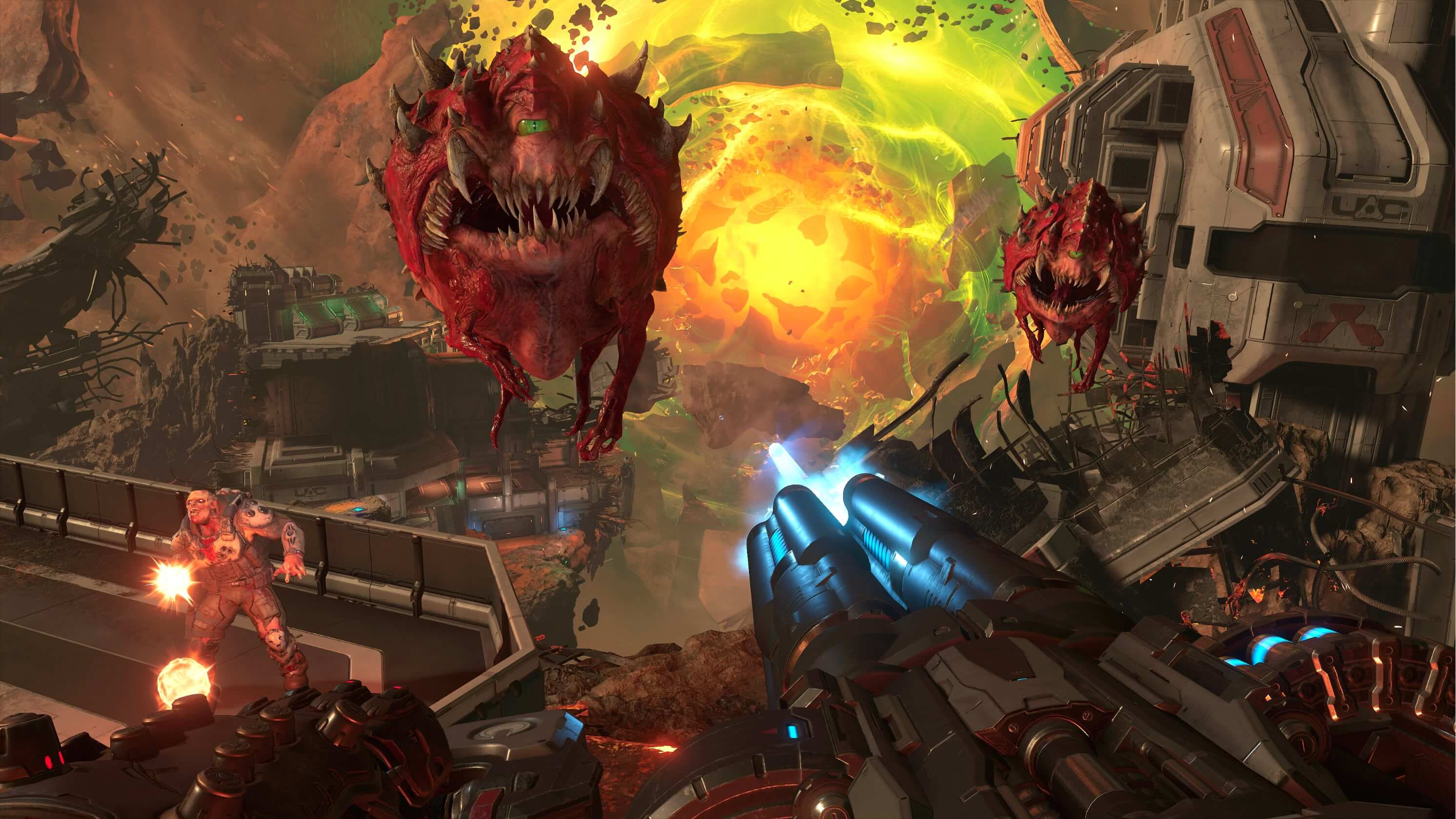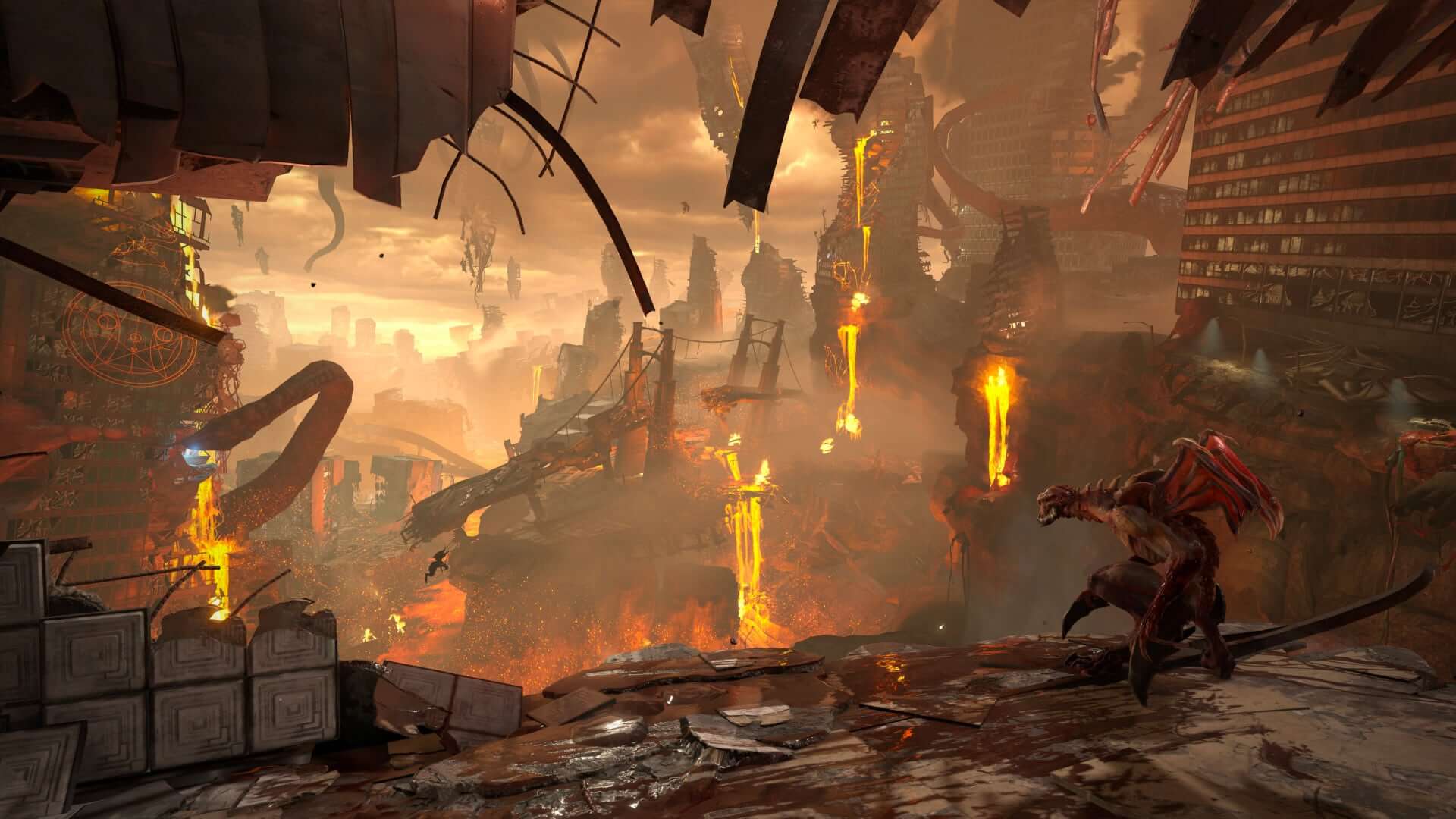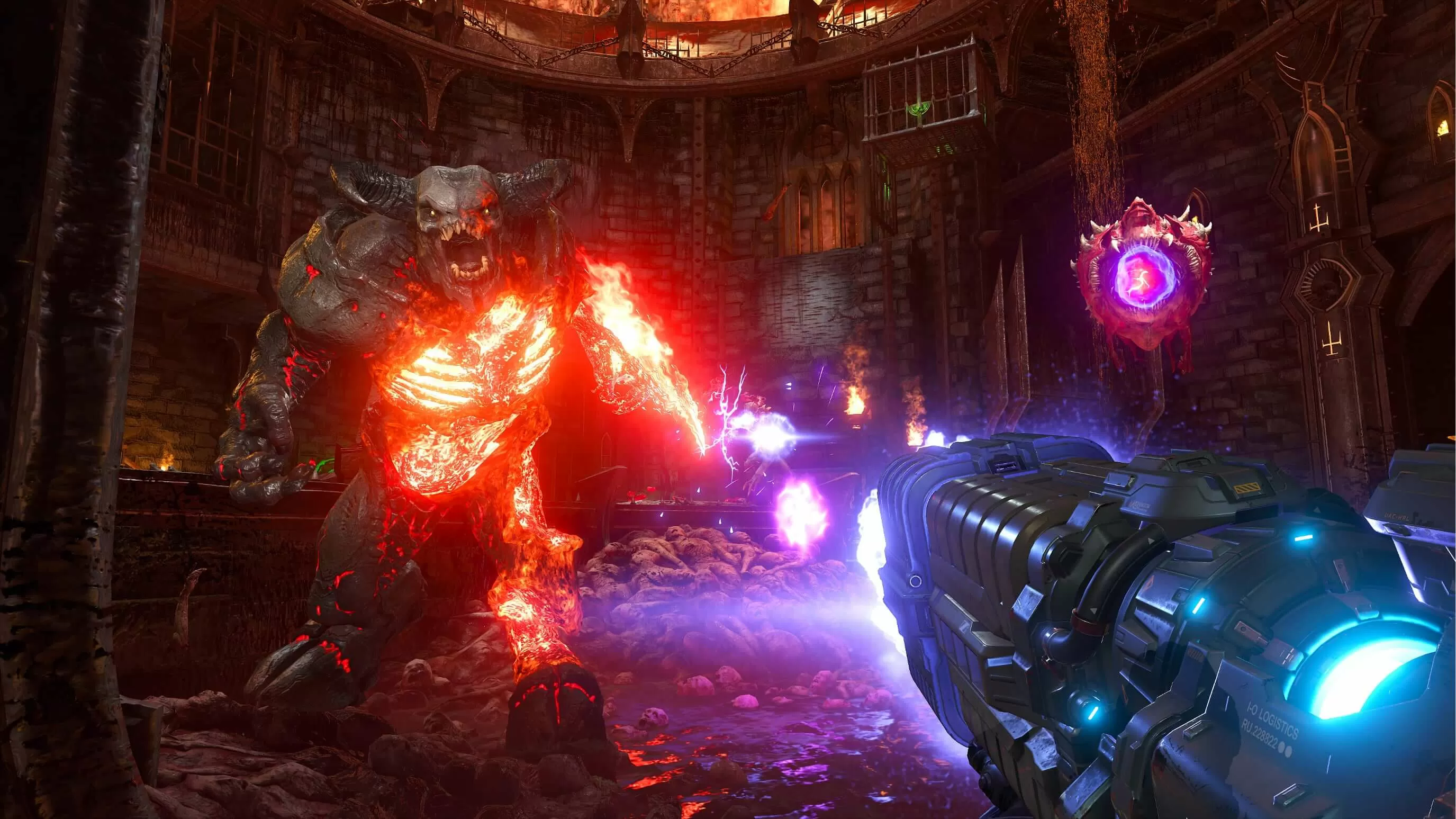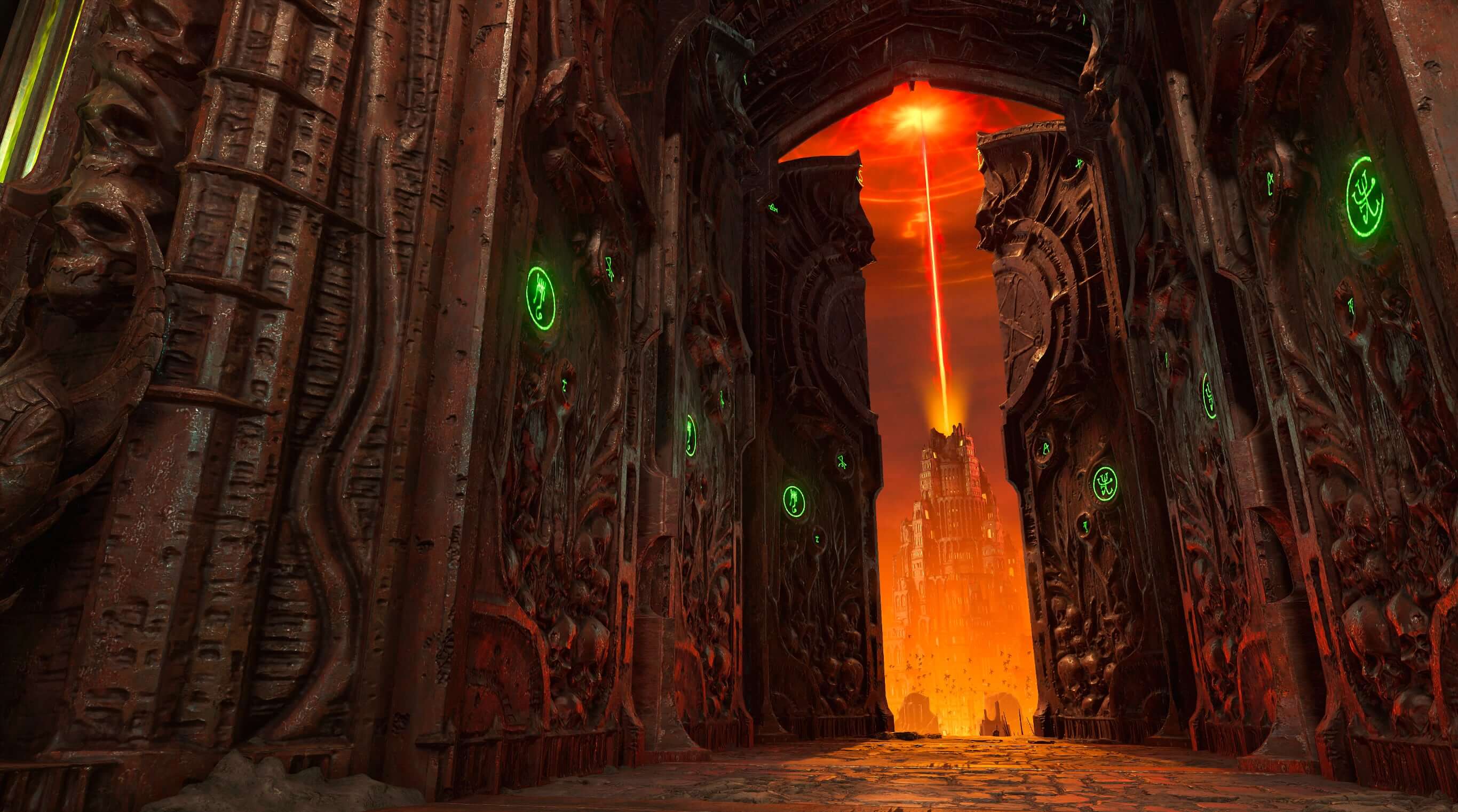Earlier this week we benchmarked Doom Eternal extensively, but only using modern GPUs. Seeing that the game keeps receiving praises we decided to go further and test it on a more ample number of graphics cards. This time we have a little over 40 GPUs tested at 1080p using the low quality preset, with and without dynamic resolution scaling.
In a way this works out to be a good guide for gamers who haven't upgraded GPUs in several generations or as a second-hand GPU guide for Doom Eternal as we've tested a number of GeForce 600, 700, 900 and 10 series products, as well as Radeon HD 7000, 200, 300 and 400 series GPUs. For the sake of context we've also added some newer GeForce 1650 series GPUs and Radeon RX 5500 results.
The idea here is to see what you can get away with for smooth playable performance. Typically there's quite a large difference in performance between a game's maximum and minimum quality presets, but coming from our previous test we know that the game doesn't scale down that well for use with lower-end products. For example, if you were to run Strange Brigade using a GeForce GTX 1060 6GB or Radeon RX 580 at 1440p, both GPUs see a ~65% increase in performance when going from Ultra to Low.
But let's say Strange Brigade isn't the best example because the game is not all that demanding to begin with. Using the same GPUs in Battlefield V we see around a ~110% performance increase when going from Ultra to Low. We cite these examples, because when playing Doom Eternal right now, there is only about a 20% performance increase when you go from the highest to the lowest graphics quality preset. In most other games, you can get a bigger performance bump simply by lowering shadow quality.
So while Doom Eternal plays very well on what's considered mainstream gaming hardware by today's standards – the GTX 1060 or RX 580 – it doesn't favor truly low-end hardware, or just older stuff that hasn't been optimized for this game at the driver level. Our test consists of the same dynamic benchmark pass we used to test current-gen hardware. This is a demanding benchmark and is representative of the performance you can expect to see in the more demanding areas of the game. So while we're showing the GeForce GT 1030 averaging 23 fps at 1080p with resolution scaling disabled, in less demanding areas the frame rates will jump up just over 30 fps.
But of course, you can't compare average frame rates across a controlled 60 second benchmark pass, with peak frame rates in a given section. Gamers tend to do this often when spot checking their frame rates, but just because you're seeing ~40 fps in a less demanding area of the game, that doesn't mean the average will be 40 fps. We get that most of you understand this, but in games where you can easily monitor your frame rate, we get a lot of comments about this.
One last example before we show you all the numbers: with the GTX 1060 3GB using the low preset at 1080p we often saw frame rates well above 100 fps, hitting 150 fps at times. But as you're about to see in the graph, the average was below 90 fps and this is because the scene we use is demanding and the frame rates are fairly consistent with no big spikes.
Let's now get into the results. As usual we're using our Core i9-9900K GPU test rig clocked at 5 GHz with 16GB of DDR4-3400 memory to remove any potential bottleneck.
Benchmarks
In total we have 41 GPUs to look at, starting with results when resolution scaling is disabled. Falling below 30 fps and failing to deliver anything that resembles playable performance under these conditions is the GTX 760, GT 1030, GTX 750 Ti, GTX 660 Ti and quite shockingly, even the GTX 680. We believe the issue here is a complete lack of optimization at the driver level.
Pushing over 30 fps we have the GTX 770 and GTX 780. The slowest tested Radeon GPU was the RX 550, averaging just 39 fps. The game was playable at this frame rate, and we saw the GPU able to push up around 60 fps in less demanding areas.
The RX 550 matched the GTX 1050, another 2GB graphics card. Then we have the HD 7790, R7 260X, HD 7870, RX 460 2GB, R7 370 and GeForce GTX 960 all averaging between 40 - 46 fps and maintaining over 30 fps at all times.

Gameplay started to become noticeably smoother with the Radeon HD 7950, R9 280 and 4GB RX 460. Then we see a big jump up in performance with the RX 570 and GTX 1050 Ti, both averaged 61 fps and now we're starting to see very smooth performance.
When it comes to really old GPUs, AMD delivers the best results with relics like the HD 7970 never dipping below 50 fps in our test. The R9 380 was extremely impressive with an average of 70 fps. To think this GPU once did battle with the GTX 960. The GeForce GPU managed just 46 fps making the R9 380 an incredible 52% faster.
We were surprised to find the 4GB RX 570 only delivering 17% more frames than the R9 380, though the 8GB version was 40% faster. Interestingly, while we saw a 20% difference in performance between the 2 GB and 4 GB version of the RX 460, we also see a 20% difference between the 4 GB and 8 GB version of the RX 570, which is a bit odd. Then again, that's what we'd call Doom Eternal performance overall: a bit bloody odd.
Above the 4GB RX 570 we find the GTX 970, GTX 1060 3GB, GTX 980 and then the GTX 1650. Beyond that we're looking at well over 100 fps on average, so it doesn't matter all that much.
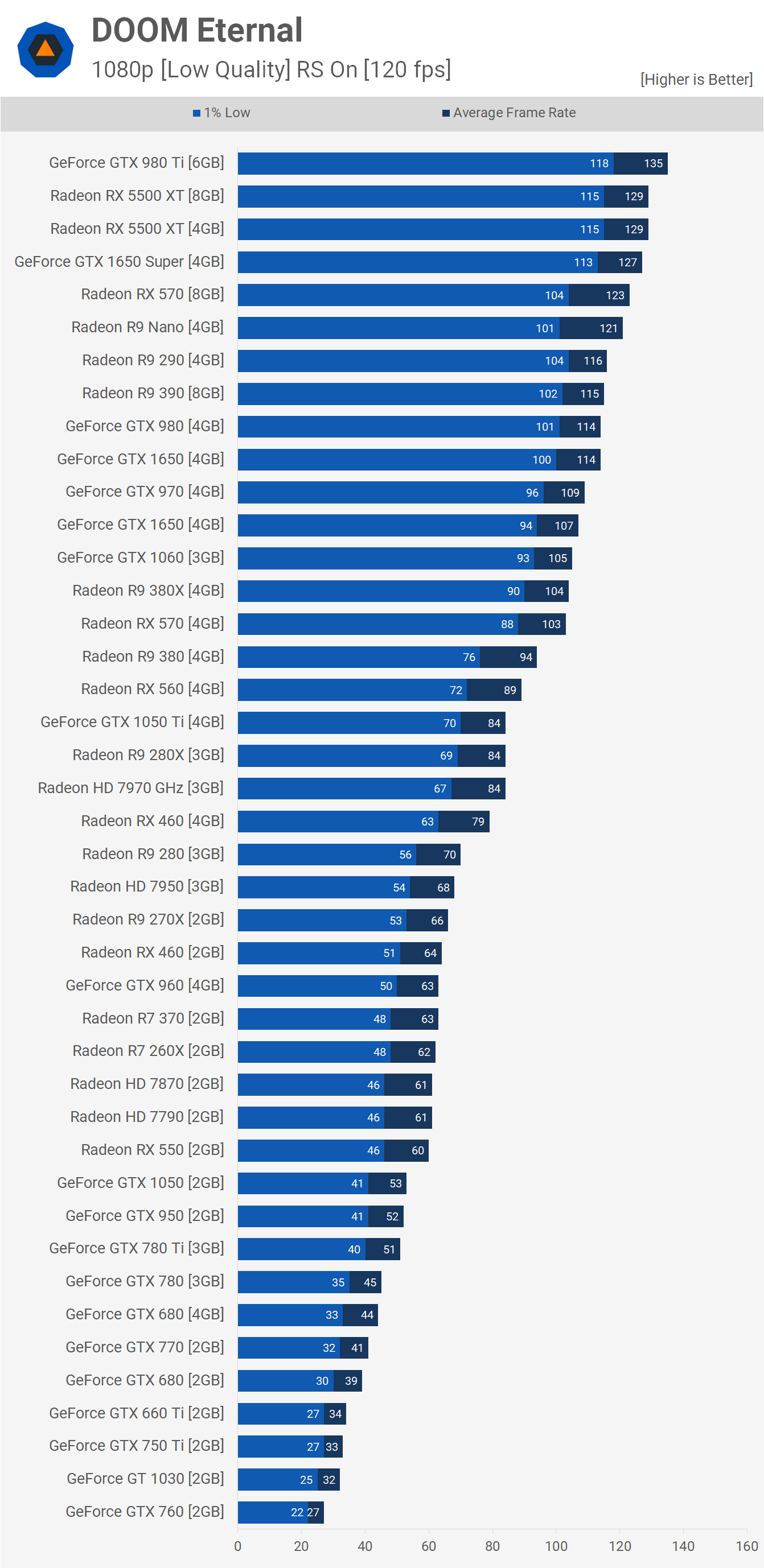
Our second set of results have dynamic resolution scaling enabled with a target of 120 fps. For the most part this means the slower GPUs have been forced to a resolution target of -50%, then the resolution scaling isn't dynamic but rather forced.
Anyway, with DRS enabled the GTX 760 still can't reach 30 fps on average. The GT 1030 now becomes somewhat playable, as does the GTX 750 Ti and GTX 660 Ti. The GTX 680 was able to keep frame rates above 30 fps throughout the duration of our test, for an average of 39 fps, which depending on your standards, is quite playable. We then see minor performance improvements with the GTX 770, 4GB GTX 680 and GTX 780.
The GTX 780 Ti, GTX 950 and GTX 1050 scaled a little better with DRS enabled and with an average of over 50 fps, they were quite playable.
Once we get to the Radeon GPUs we're seeing a 60 fps average, so relatively smooth playable performance. The RX 550, HD 7790, HD 7870, R7 260X and R7 370 all delivered basically the same level of performance and we guess we can also include the GTX 960 and RX 460 here as well.
For the next tier in performance you'll need a 4GB RX 460, HD 7970, R9 280X or GTX 1050 Ti and once we push beyond that we're starting to get into 100 fps plus territory. For high refresh rate gamers on a budget that don't mind enabling DRS, there are a number of relatively affordable GPUs to pick from.
What We Learned
That was a boatload of mostly old GPUs put through their paces in Doom Eternal. Keep in mind this data could change over the coming weeks and months if id Software continues to patch and optimize the game for better performance. The same is true for AMD and Nvidia drivers, though we wouldn't hold our breath on optimizations for products six years and older.
Based on the results shown, if you want to see over 60 fps at all times without enabling resolution scaling, your options are limited. From the older generations you'll require products such as the GTX 970 or R9 290/390 and from the newer generations an RX 570, 5500 XT or GTX 1650/1650 Super.
With resolution scaling enabled, which is essentially playing at 720p, you can get away with products such as the RX 460 4GB or GTX 1050 Ti for over 60 fps at all times. For just 60 fps on average there are more options including parts such as the R7 260X and GTX 960.
The CPU used in your system won't matter much with these GPUs as you'll almost always be limited by the GPU, so expect similar results with even an old AMD FX processor – and that's not something you'll often hear us say.
As for the graphics presets, we hope id Software makes some changes here as it's obviously possible to make the game look a lot worse than it currently does using the low quality preset and that would help out gamers with lower-end hardware. For now you can rely on the console to manually degrade some of the quality settings for better performance.
There are also a number of bugs that tank performance for no apparent reason. It had us messing around with the settings and sometimes resetting the game a few times before the original performance was restored. It's unclear to us what's going on here, but appears to be a fairly common problem as this performance bug has been widely reported online.
Finally, if you're looking for more games to play on your old PC or laptop (even on integrated graphics), check out our guide 25 Great Games You Can Play on Laptops and Budget PCs.
